Sound: 









Value: 









(Read about our ratings)
Measurements can be found by clicking this link.
 Under normal circumstances, I’d have been reluctant to review the Campfire Audio Solaris earphones. Why did I relent? Because I’d had such a positive experience with the company’s Comet earphones, and because company founder Ken Ball’s pitch for the Solarises sounded so proud and impassioned, I didn’t even bother to find out what they were before I agreed to the review.
Under normal circumstances, I’d have been reluctant to review the Campfire Audio Solaris earphones. Why did I relent? Because I’d had such a positive experience with the company’s Comet earphones, and because company founder Ken Ball’s pitch for the Solarises sounded so proud and impassioned, I didn’t even bother to find out what they were before I agreed to the review.
The Solarises are a set of complex, bulky, and expensive ($1499 USD) earphones. I have to confess that I’ve long been skeptical of such products. The tiny size of balanced armature drivers -- some measure only 5mm on their longest side -- makes it possible to pack a dozen drivers into a single earphone, but I often wonder why earphones need so many drivers when speakers do not. The more drivers there are, the greater the chance of making an error in the acoustical tuning or the crossover. And some of the multi-driver earphones I’ve tried were so bulky that I could never forget I was wearing them.
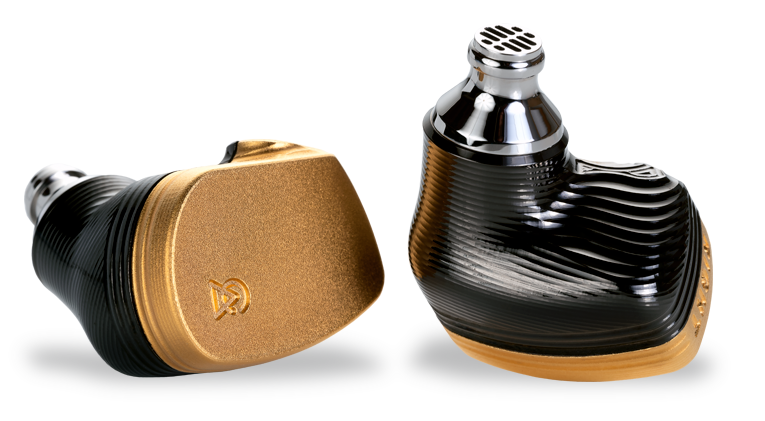
But earphones like the Solarises do have potential advantages. The more drivers there are, and the more complex the acoustical passageways inside the earphones, the more options there are for fine-tuning the sound. And at prices (and margins) like this, the company can afford to do more fine-tuning.
The Solarises remind me of typical three-way speakers, in the sense that each range of the audio spectrum gets a driver type and acoustic environment tailored specifically to its physics. The bass comes from a 10mm dynamic driver mounted in Campfire’s Polarity Tuned Chamber, which features tuned cavities in front of and behind the driver. The mids come from a single, rear-ported balanced armature. The highs come from two smaller balanced armatures mounted in Campfire’s Tuned Acoustic Expansion Chamber, which tunes the drivers’ response purely through the size and shape of the chamber that they vent into, not through the use of acoustic dampers as in most earphones. (All these proprietary names for acoustical tuning features are giving me flashbacks to Polk ads from the 1990s. Good times . . .)
That’s a lot of components and chambers for a set of earphones, and as a result, the Solarises are comparatively bulky, though less so than some multi-driver earphones I’ve seen. The ribbed texture on the surface gives the earphones an unusual, almost organic look; if they were colored off-white and I saw them lying on the beach, I might think they were the shells of mutated mollusks. My listening panelists were utterly baffled when they picked up the Solarises and tried to figure out how to insert them. More on that later.
In the box
The Solarises come with a rather large (4.8" by 4.8" by 1.4") leather travel case. It’s too bulky to fit comfortably into a pants pocket, but it looks nice and it’s lined inside with soft, wool-like material. A woven sleeve protects the earpieces from being scratched when they’re inside the case. Ten sets of tips are included: S/M/L/XL sizes in Final Audio E-type tips, S/M/L in standard silicone tips, and S/M/L in Campfire Audio Marshmallow foam tips. A Campfire Audio lapel pin and an earphone cleaning tool are also included.
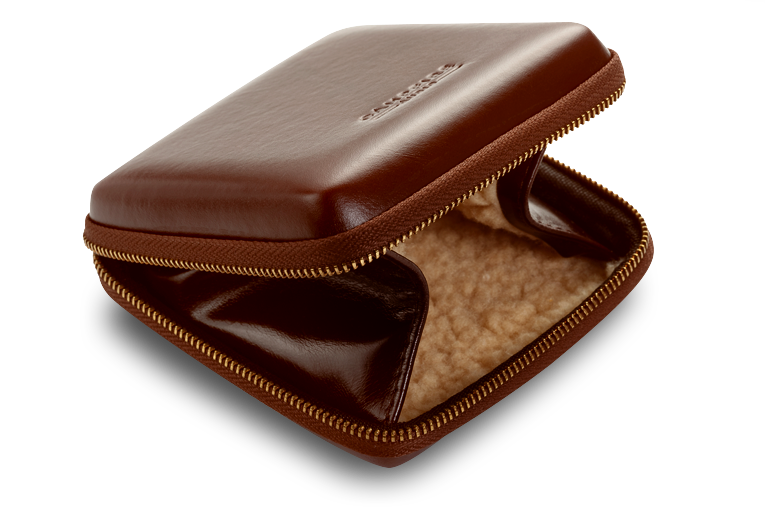
The included 4' (1.2m) cable is tipped with a 1/8" (3.5mm) plug on the source end and MMCX connectors on the earphone ends.
Use
Figuring out how to insert the Solarises into your ears is far from intuitive, and like any other earphones, unless they’re properly inserted, they’ll sound weird. They’re unlike any other earphones I can remember testing; the earpieces are oriented vertically instead of horizontally, and the over-ear cables don’t have an ear shape molded into them -- which they absolutely, positively should. This design resulted in many “What the ???” moments as I and my listening panel tried to listen to them. “Oh . . . OH!” panelist LeRena Major exclaimed when she finally got a good fit with the Solarises after about ten minutes of experimenting with different tips, and after I used the KB5000 artificial pinna from my G.R.A.S. Model 43AG ear/cheek simulator to show her how the Solarises were supposed to fit.
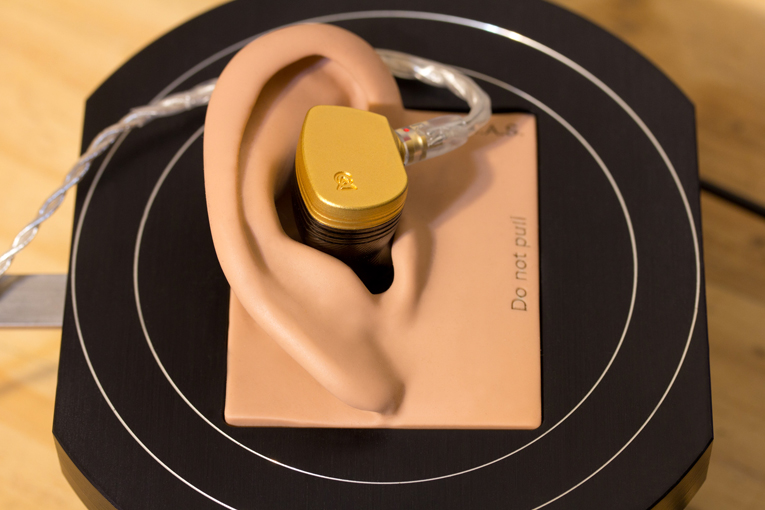
But once I got a good fit with the Solarises (using the XL tips, which were the only ones that fit me), and settled in for a three-hour-long listening session on my front porch, I was surprised to find them fairly comfortable. The weight was supported well enough in my ears that they never gave me that feeling like they were about to fall out. There’s a little corner where the soundtube meets the body of the earpiece that dug into my earlobe a bit -- not to the point where it was intolerable, but it made me wonder if there was enough metal there that I could round that corner a bit more. However, if I moved my head more than a little, I found that the Solarises worked their way loose pretty easily. A light push was always adequate to reseat them, but every listening session required a bit of diligence on my part to keep them sealed in my ear canals. (If the cables had an earlobe-hugging curve built into them, or if any of the foam tips had been big enough to fit me, some or possibly all of this problem would probably have vanished.) In some ways, I wish using the Solarises was more intuitive, but perhaps there’s a certain joy in owning high-end earphones that require a sort of “secret handshake” with your earlobes.
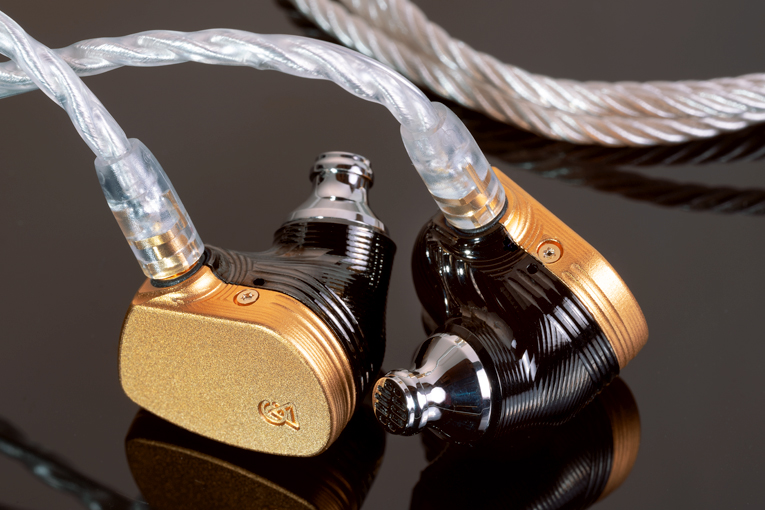
Considering the Solarises’ very low 10-ohm impedance, I’m not sure I’d want to make a blanket recommendation that it’s OK to drive them from a garden-variety portable device, but I got pretty good sound connecting them directly to my Samsung Galaxy S9 phone. I did appreciate the extra bass oomph and fullness I got when I interspersed an iFi xDSD DAC-headphone amp between the Samsung and the earphones, though.
Sound
To me, the tonal balance of the Solarises eludes description. As a jazz bassist who averages half a dozen gigs and maybe eight rehearsals and jam sessions a month, and who frequently attends the live performances of many musical associates, I know what a natural tonal balance sounds like. When we describe the tonal balance of an audio product, we describe its flaws -- too much or too little upper bass, a boost in the lower treble, etc. But I don’t hear any flaws in the Solarises’ tonal balance. In terms of the balance of bass to midrange to treble, and the “micro-balances” within those regions, the Solarises have the effortless, natural sound of live acoustic music.
For example, when I listened to the recording of Berlioz’s Harold in Italy, Op.16 by the San Diego Symphony Orchestra conducted by Yoav Talmi, with violist Rivka Golani and violinist Igor Gruppman (16-bit/44.1kHz WAV, Naxos), the Solarises gave it that warm, enveloping, diffuse sound of a real orchestra in a real concert hall. No instrument stood out or receded from the group, and no instrument’s tonality was mangled. In Golani’s gorgeous solo in the first movement “1. Adagio,” I could hear her notes bloom as they emanated from the viola, traveled into the hall, and reverberated through the space. These are the same kinds of subtleties I enjoy whenever I hear an orchestra performing in a real hall, and I’m lucky enough to get a seat that’s near the centerline of the hall.
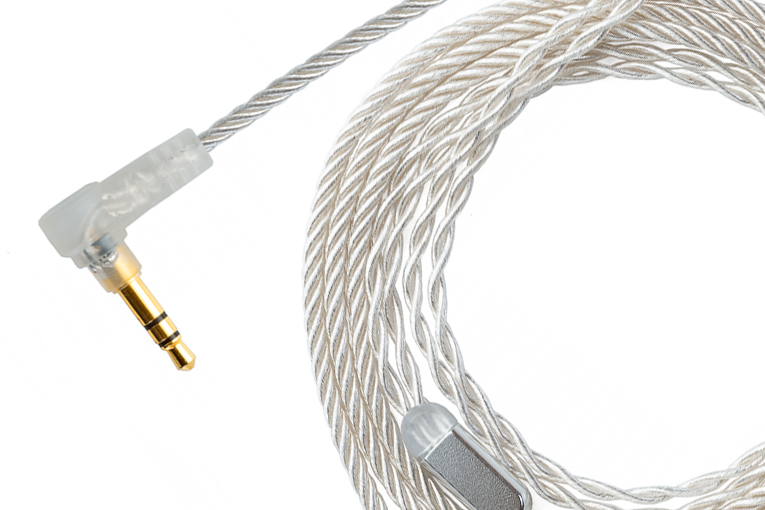
As should any good earphones, headphones, or speakers, the Solarises sounded just as great on completely different music, such as the “Armed and Dangerous” single by rapper Juice WRLD (320kbps Ogg Vorbis, Interscope / Grade A Productions / Spotify). Again, I heard no aspect of the Solarises’ performance that I didn’t like. The deep bass hits in the tune were clean -- powerful, yet well-articulated and never muddy or boomy. All the voices sounded clear and natural, and the Solarises made it very easy to hear the slight panning differences as the various backing voices jumped in and out suddenly, complementing and commenting on Juice WRLD’s main line. I don’t know what this sounded like in the studio, but I do know that at least as heard through the Solarises, there was nothing I’d want to change about this mix.
Chesky Records’ Binaural+ recordings are among the most revealing tests of headphones and earphones. Made using a dummy head with microphones in the ears, they deliver a sound that’s as close as we can probably get to hearing a live performance (at least without resorting to the heavy-duty digital signal processing of the BACCH-SP and Smyth Realiser virtualizer systems). “After You’ve Gone,” from Camille Thurman’s Waiting for the Sunrise (16/44.1 AIFF, Chesky), heard through the Solarises, gave me that huge sense of space I know this recording has. Most important to me, Cecil McBee’s double bass sounded like a double bass, with just the right mix of lower-frequency body and midrange definition (i.e., neither too boomy nor too twangy). But also important is that the Solarises didn’t color Thurman’s clear, beautiful voice -- it just sounded natural and perfectly balanced.
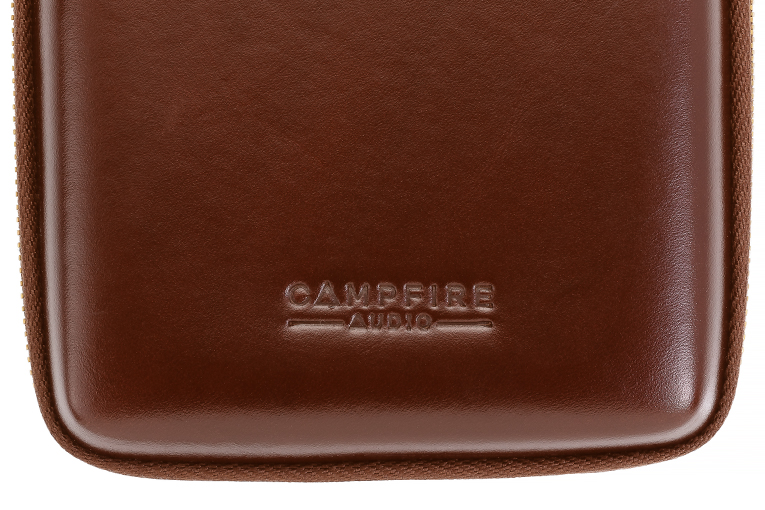
Wondering if taking an abrupt turn in my listening fare might uncover something about the Solarises that I didn’t like, I put on “Dirty Blue Gene,” from Captain Beefheart and His Magic Band’s Doc at the Radar Station (320kbps Ogg Vorbis, Virgin/Spotify). This can be a tricky track, because it’s dominated by two flailing electric guitars and the bass is low in the mix; through earphones and headphones that are even a little bass-shy, the song’s groove never gels. But the Solarises nailed it -- because of their pretty-much-perfect tonal balance, I could easily pick out the dueling guitars, the bass part, all the drums in the kit, Beefheart’s “singing,” and the out-of-sync backing vocals. The tune grooved so hard I just had to turn it up louder than I probably should have, and I listened to it about a dozen times over. To bring out the elusive awesomeness in this extremely idiosyncratic tune is as much as I could ask of a set of earphones.
Comparison
I don’t keep a lot of ultra-high-end earphones on hand, but I do have my UE Reference custom-molded earphones, which the engineers at Capitol Studios voiced, and which I’ve found to have a wonderfully flat response in the mids and treble. The References and the Solarises both sounded flat and neutral in the mids and treble -- in fact, remarkably alike -- but whether because of the voicing or the way they fit in my ears, the References didn’t have as much bass. This meant that in the Captain Beefheart recording, I heard all the parts just as clearly in both earphones, but the tune didn’t groove as well through the References. Nor did instruments have as much body -- the snare drum in “Dirty Blue Gene” sounded very light through the References, as if the drummer was pulling back as far as possible to accompany a quiet balladeer (a description I’m quite sure no one has ever applied to Beefheart).
Audeze’s open-back, planar-magnetic earphones have perhaps the most spacious sound I’d yet heard through earphones, so even though I don’t have the higher-end versions employing this technology, I wanted to see if the Solarises could compete. So I plugged the Audeze iSine10s ($399) into the xDSD and played “Everything I’ve Got Belongs to You,” from jazz-ish singer Cécile McLorin Salvant’s new The Window (320kbps Ogg Vorbis, Mack Avenue / Spotify). Her voice seemed to have about the same tonal balance through both earphones, although it sounded more intimate and detailed through the Solarises. But I heard a much bigger difference with the piano that accompanies her. Through the iSine10s, it sounded rather dull, like a dusty old upright. Through the Solarises, I could hear more detail in the piano’s sound, and could confirm that the piano probably is an upright -- or at least it’s being played in a style we associate with uprights.
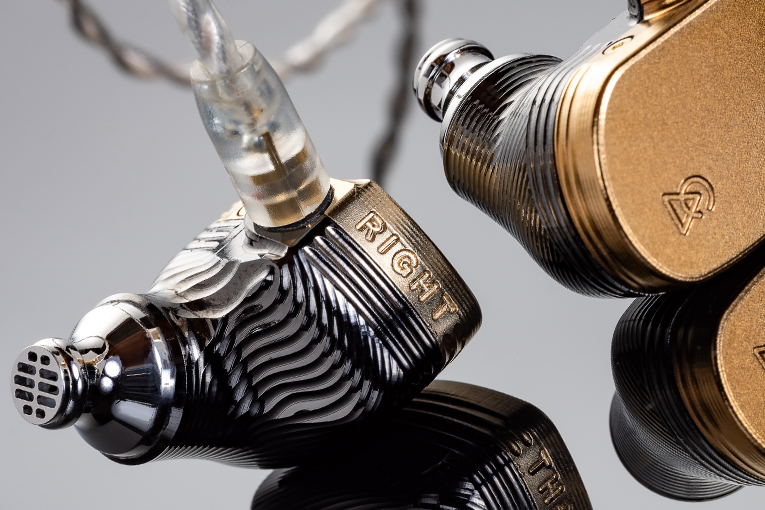
My outside panelists -- John Higgins, who holds a master’s in music performance from USC and has served as a frequent contributor to Wirecutter and Sound & Vision, and LeRena Major, a Los Angeles saxophonist who’s held several positions in the music business and is a voting member of the National Academy of Recording Arts and Sciences -- both got to compare the Solarises against the AKG N5005 earphones ($1499.99). The N5005s are said to be closest to the “Harman curve,” the frequency-response target that researchers at Harman International have found is the one most people prefer. (Sadly, I was never able to get a good fit with the N5005s, so I can’t report on them, but I will be including them as a reference standard in my measurements going forward.)
John, who I’m not sure ever got the Solarises to fit right (and thus may not have gotten enough bass out of them), found the AKGs more balanced overall, although he loved the Solarises’ reproduction of high frequencies. After LeRena was able to get the Solarises to fit, she did nothing but rave about them. “The design is kind of wonky,” she said, “but if the intent here is to make a high-end product that sounds absolutely fantastic, they got that right. They sound great with everything.” To her, the N5005s sounded comparatively less clear and less enveloping.
Conclusion
Considering that I and one of my panelists couldn’t find anything in the Solarises’ sound that deserves less than a rave review (and that I’m not confident my other panelist had a representative experience with them), I’m going to give them the first 10 rating for Sound that we’ve ever given on SoundStage! Solo. That said, the extensive thought and experimentation that apparently went into voicing these earphones seems in inverse proportion to the thought that went into their ergonomics. But I think that with the variety of tips provided, any listener should be able to get extraordinary sound from the Solarises -- provided they can muster the patience, and don’t mind readjusting them a bit during their listening sessions.
. . . Brent Butterworth
Associated Equipment
- DAC-headphone amp -- iFi xDSD, Musical Fidelity V-CAN
- Source -- Samsung Galaxy S9 smartphone
Campfire Audio Solaris Earphones
Price: $1499 USD.
Warranty: One year repair or replacement.
Campfire Audio
2400 SE Ankeny
Portland, OR 97214
Phone: (855) 204-1492 or (503) 853-8608
Website: www.campfireaudio.com





